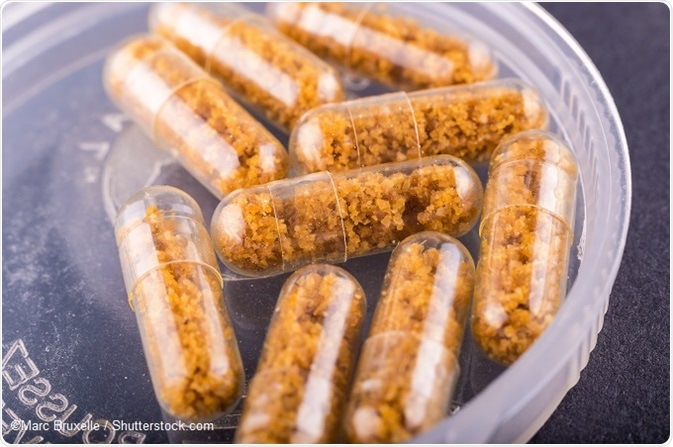Fecal microbiota transplant (FMT) is based on the transfer of stool material from a healthy donor who has no contagious diseases or history of recent antibiotic use, to a patient with disturbed gut mucosa who may benefit from the correction of inflammation.
Feces processed for transplant is classified as a human tissue. Fecal transplant was first carried out in 1958 in humans. However, it has been used in animals for over a century, as in sick horses with diarrhea.
Donor selection
Donors for FMT must meet strict criteria, termed the Amsterdam protocol. In most cases, patients locate their own donors, who are typically relatives. However, this is not a necessity. Thus, donors may be intimate friends or spouses, near kin, or strangers.
Currently, anonymous donors are being offered from a list of people so that patients need not take on the burden of identifying their own donors. This helps create a donor pool which has already been tested and used with a record of cures achieved, as well as helping to screen out donors who have the same type of disease susceptibility, whether genetic or environmental, as the recipient.
Freedom from transmissible infections is a prerequisite for FMT donors. This means that potential donors must be tested for the following diseases, either in active form, or if they have been exposed to them within one year:
- HIV
- Hepatitis B virus
- Hepatitis C virus
To further ensure that the risk is minimal, the following exclusion factors are utilized:
- Individuals who have a history of high-risk sexual behavior
- Those who are drug users, or have a history of body piercing or tattooing in the previous six months
- History of being in prison
- History of travel to areas with endemic diarrhea
Other areas of concern include signs of chronic, non-infectious bowel disorder:
- Inflammatory bowel disease
- Irritable bowel syndrome
- Chronic diarrhea or constipation
- Gastrointestinal malignancy, past or current
- Gastrointestinal polyposis
Again, donors should not:
- Have undergone antibiotic therapy for at least three months prior to donation
- Be immunosuppressed because they are undergoing therapy with immunosuppressants or systemic chemotherapy for neoplasms
Donors should also be screened for:
Again, bowel infections such as the following should be ruled out by appropriate testing:
Stool ova, parasites, antigen tests, and culture/sensitivity for organisms such as Clostridium difficile and giardia.
At least 150 g of feces should be obtained, and if used fresh, should be injected in the gut lumen within 6 hours.
Procedure
The introduction of fecal transplant is via various routes such as nasoduodenal intubation, esophagogastroduodenoscopy, nasojejunal tube or nasogastric tube, colonoscopy, or via enema. The former is often unacceptable because of the negative associations of stool passing through the nasal cavity, and the potentially serious consequences of aspiration of stool if vomiting should occur. Moreover, colonic microbiota should ideally be introduced into the lower bowel rather than into the upper small intestine.
Fecal transplant via colonoscopy or enema
Colonoscopy or a retention enema is commonly used. Antibiotics should be stopped at least a couple of days prior to the planned procedure. The day before, the patient is put on a liquid diet and then either a laxative or an enema is administered the previous night, to make sure the bowel movements do not happen the next day. This also has the important benefit of preparing the bowel by cleansing it of abnormal microbes.
What is Fecal Microbiota Transplantation (FMT)?
The patient is pre-treated one hour prior with bowel motility inhibitors, usually two loperamide tablets, to retain the transplant for at least four hours. Deep sedation is also given. The endoscope is passed up to the beginning of the colon and slowly withdrawn, while the fecal transplant is injected.
The donor must take laxative preparations to ensure a bowel evacuation occurs on the specified morning. The fresh stool sample is mixed uniformly using a disposable tool, usually with saline, though water, yogurt, or milk may also be used, to preserve the different aerobic and anaerobic species intact. The homogenized solution is then filtered with, for instance, a disposable coffee filter. This will leave a brown solution containing most of the bacteria colonizing the bowel. The donor brings the prepared sample to the hospital.
More recently, the practice of delivering a fresh sample to the hospital for dilution with saline, blending, and then filtering out particles has been adopted. Colonoscopy also allows the colonic mucosa to be evaluated so that the disease can be graded for severity, as well as ruling out other forms of disease. However, the risk of perforation is higher in cases of severe colitis.
Implantation of the transplant via enema has the advantages of requiring less specialized care, and of being safe and economical while having the same or higher efficacy of 95% in changing the gut microbiota and relieving symptoms of bowel disease.
Frozen fecal sample transplant
A frozen, stored sample technique has also been refined. The properly filtered sample is mixed with appropriate cryogenic liquid to freeze it at -80°C and taken out of storage as needed. Advantages include the absence of fecal odor and reduced volume of transplant fluid, as well as standardization of the purified bacterial and cellular content, with a longer period of viability.
Clinical efficacy is equivalent whether the feces are fresh or fresh-frozen. The transplanted microbiota implant well, colonizing the recipient’s gut as expected, resulting in a significant alteration in the microbial profile and inducing a cure in 89%. The patient can leave the hospital once the effects of sedation cease.
Fecal transplant capsule
Another way of achieving fecal transplant has been described where the sample is ingested as a swallowable capsule. Here the sample has been taken and mixed with 10% glycerol (anti-freeze) before being stored at -80°C.

References
- https://www.ncbi.nlm.nih.gov/pmc/articles/PMC4895930/
- https://www.ncbi.nlm.nih.gov/pmc/articles/PMC3365524/
- http://www.hopkinsmedicine.org/gastroenterology_hepatology/clinical_services/advanced_endoscopy/fecal_transplantation.html
- https://www.ncbi.nlm.nih.gov/pmc/articles/PMC3742951/
- https://www.ncbi.nlm.nih.gov/pmc/articles/PMC4977816/
Further Reading